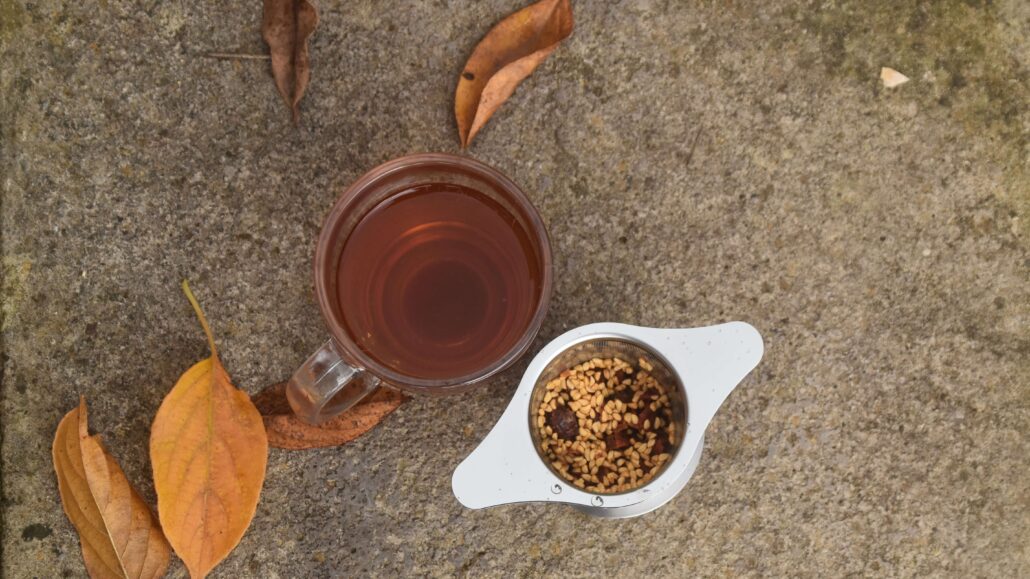Kids, Out and About, Recipes, using our products
Autumnal Tea, Wintry Warmness and Just That Bit of Wabi Sabi
The colder seasons have definitely set in. Typically, this involves all kinds of viruses, nasty coughs and runny noses all over the place. A sense of gloom might be lurking around the corner as we get less and less daylight.
But luckily, in between all grey, cold and rainy days, there will always be those bright sunny ones, shining their golden light on the autumn leaves. And there will always be ways to get warm and cosy inside. And there are ways to combine the two, to boost your mood and immune system to the max.
Enjoying time outside
Sometimes it is tempting to just stay in bed. I know. I am not saying you shouldn’t ever.
But typically, going outside will make you feel better. Even on grey days. Seeing the world glistening with raindrops or blanketed in mist; hearing fallen leaves crumble under your feet, or the splish-splash of stepping on wet surfaces, being mindful of all that and simply enjoying it, will benefit your well-being, as will taking in good deep breaths of fresh air. Not to mention going out on sunny days …
Over more recent years, lots of research is done to the benefits of getting outside and ever more doctors are prescribing time in nature. It is no secret that taking walks and spending time outdoors boosts both your physical and your mental health. But there is also a bit of ancient wisdom to consider, for full impact.
Wabi Sabi
From ancient Japanese philosophy comes the concept of Wabi Sabi. Or actually, these are two concepts:
- Wabi is about beauty in humble simplicity. It invites you to appreciate the beauty around you, without measuring it against ideals of perfection set by modern society and commercialism.
- Sabi is about the way all things age and decay, and the beauty hidden in that. It invites you to appreciate the beauty in imperfections, such as wrinkles that show how much we have lived and laughed, or a worn-down table where many meals were enjoyed.
Together they form a philosophy that is about way more than influencing art, or Pinterest boards. It is about slowing down and embracing imperfection as the true nature of things. And what better season to start doing so than autumn? Look around you and you’ll find nature clearly demonstrating her aging and decay. And it’s beautiful.
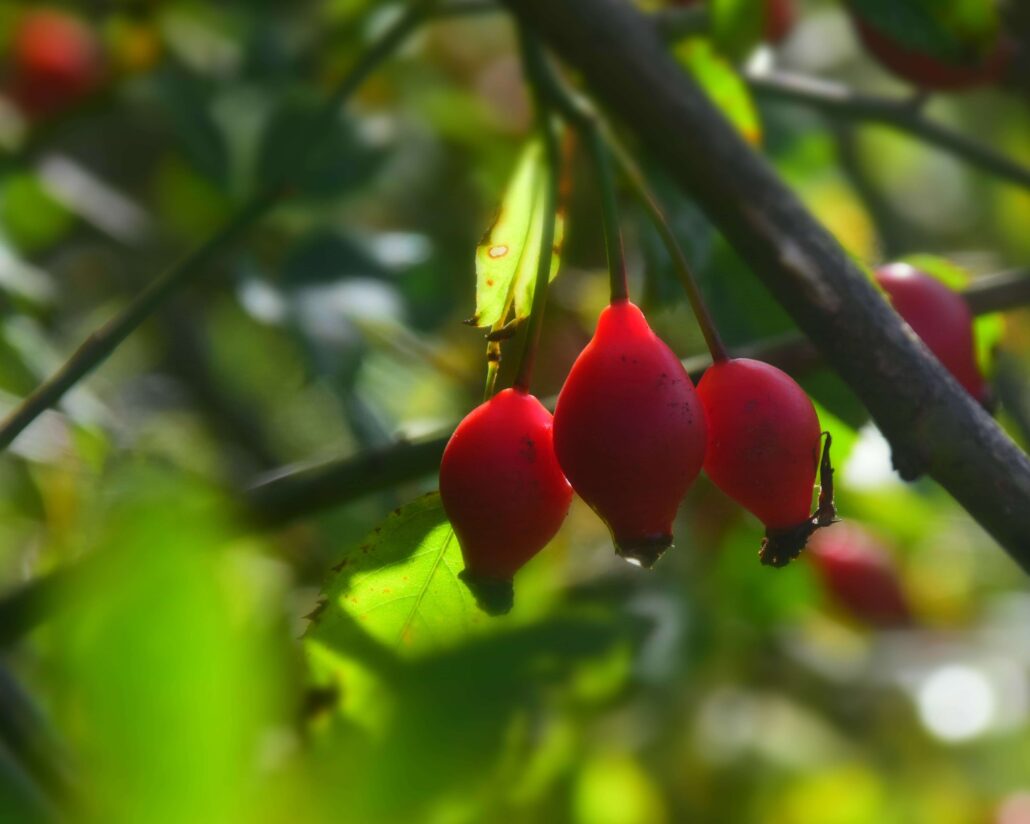
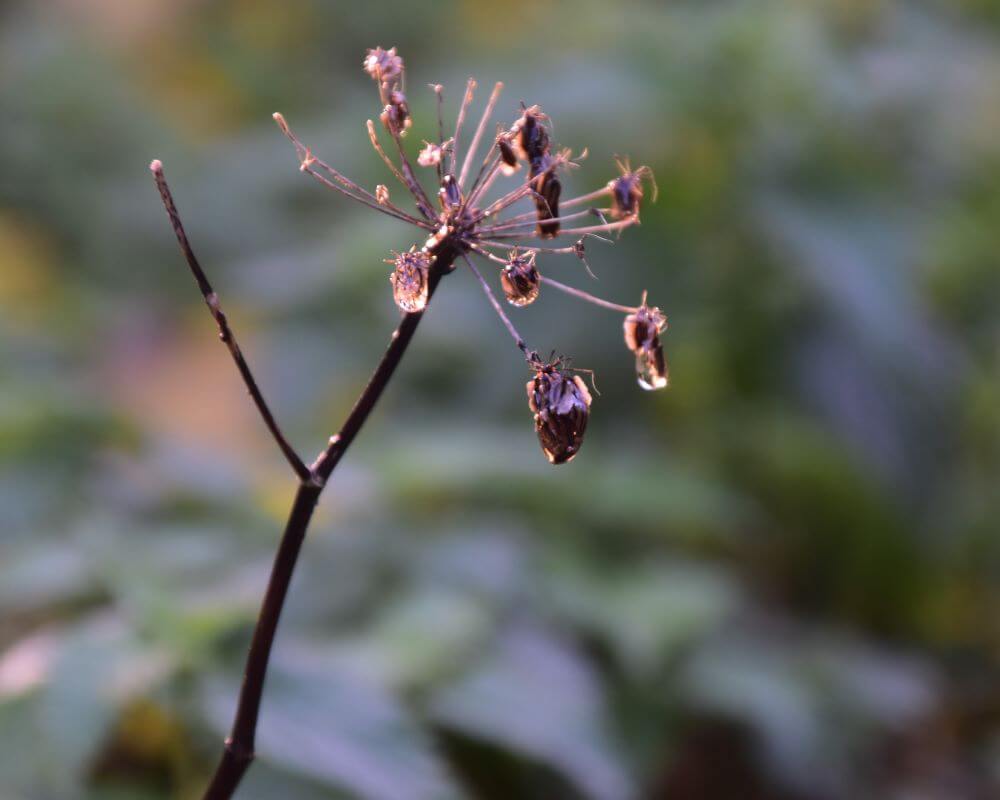
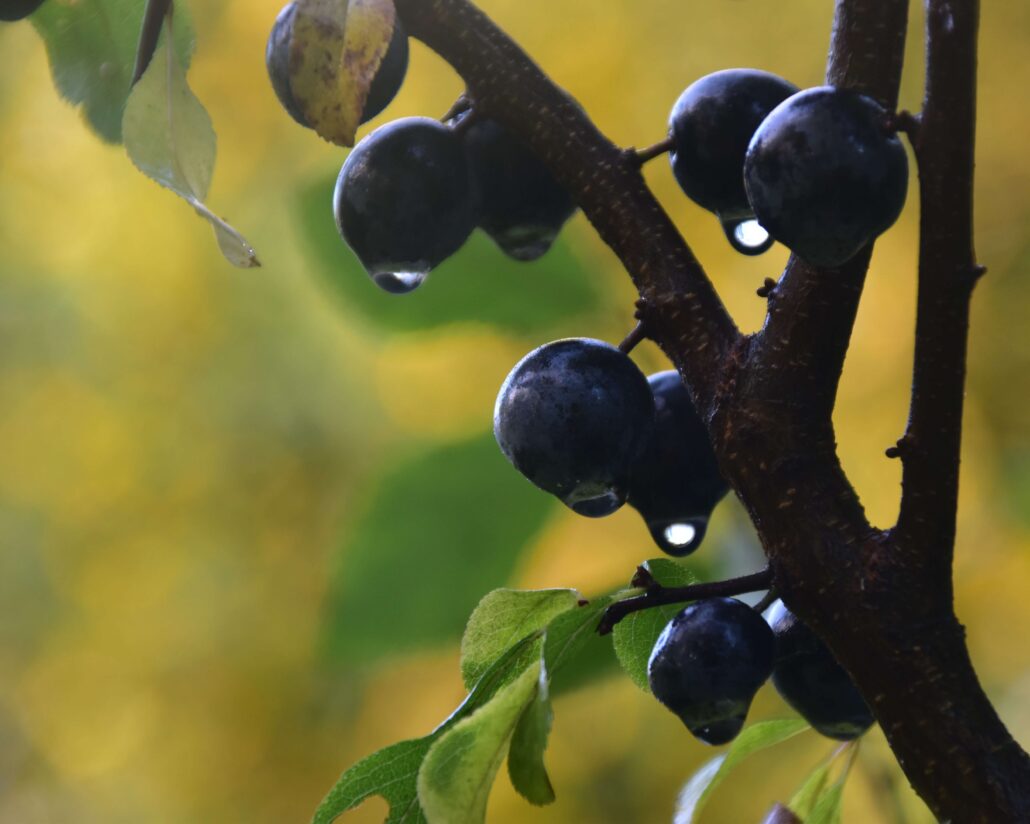
And even if it just looks damp and dark to you, it’s still part of the natural cycle that will bring on spring and summer, and there is definite beauty in that
Realising so may help you accept things about yourself, your surroundings and your life. There is no way they’re all going to be perfect, so there is no use chasing after unattainable ideals. Better accept what you’ve got and look for the beauty in that. Be mindful of all little things around you.
And as the year draws to an end, be appreciative for all it has brought to you, instead of panicking over the idea that again you have not accomplished exactly what you should have, or would have wanted. Imperfection is the nature of all things, and there is lots of beauty to be found if you accept that.
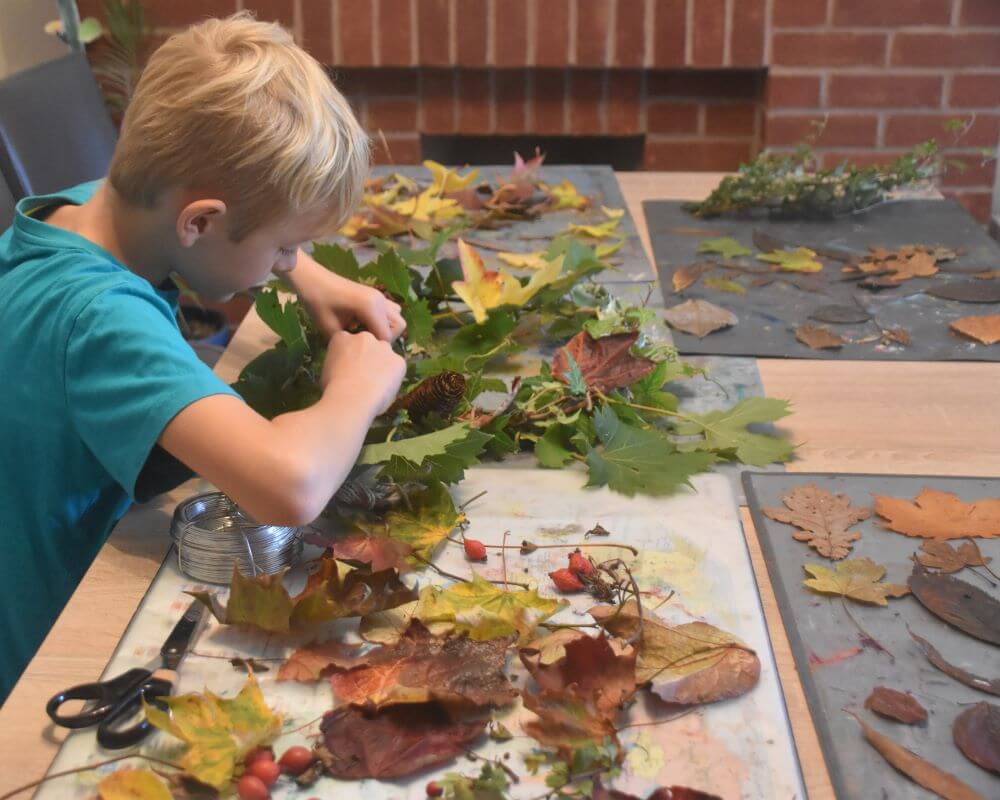
Take Something with You
While enjoying your time outdoors, appreciating your surroundings, you’ll find much beauty. Why not take a bit with you?
These can be things like leaves, pinecones and acorns to make autumnal decorations [to enjoy back indoors. Try not to pick anything, but rather collect what has already fallen. And do leave plenty for others, and for all critters that need these things to feed on and live in.
Or these can be edible goodies nature is still providing well into autumn.
Foraging, if done responsibly, is a lovely way to connect with nature, and a fun activity with kids too. Just be sure you
- know what you are taking (not something poisonous that just looks similar)
- are not picking from someone’s personal property
- leave more than you take
- don’t damage plants or surroundings
Something that looks really striking but I like to take as a food-thing, is rosehips, which can be found in hedgerows well into winter, depending on the weather. They are still out there now, in any case. In the past, I have already written about making rosehip jam. But there is more you can do with rosehips.
You guessed it: rosehip tea it’s going to be.
Making Your Own Rosehip Tea
Rosehips are bursting with vitamin C, as many sellers of rosehip tea will tell you. They won’t tell you that little of that remains after preparing them into tea. Some of them do actually add vitamin C, so if you’re buying rosehip tea, consider what you’re buying exactly and why.
But making your own rosehip tea is very easy, and much more fun. I think. There is just something very satisfying about picking your own hips and brewing them into your own tea. Something about being connected. And if you have kids, they are sure to love it too.
There are two ways to go about this: you can use either fresh or dried rosehips.
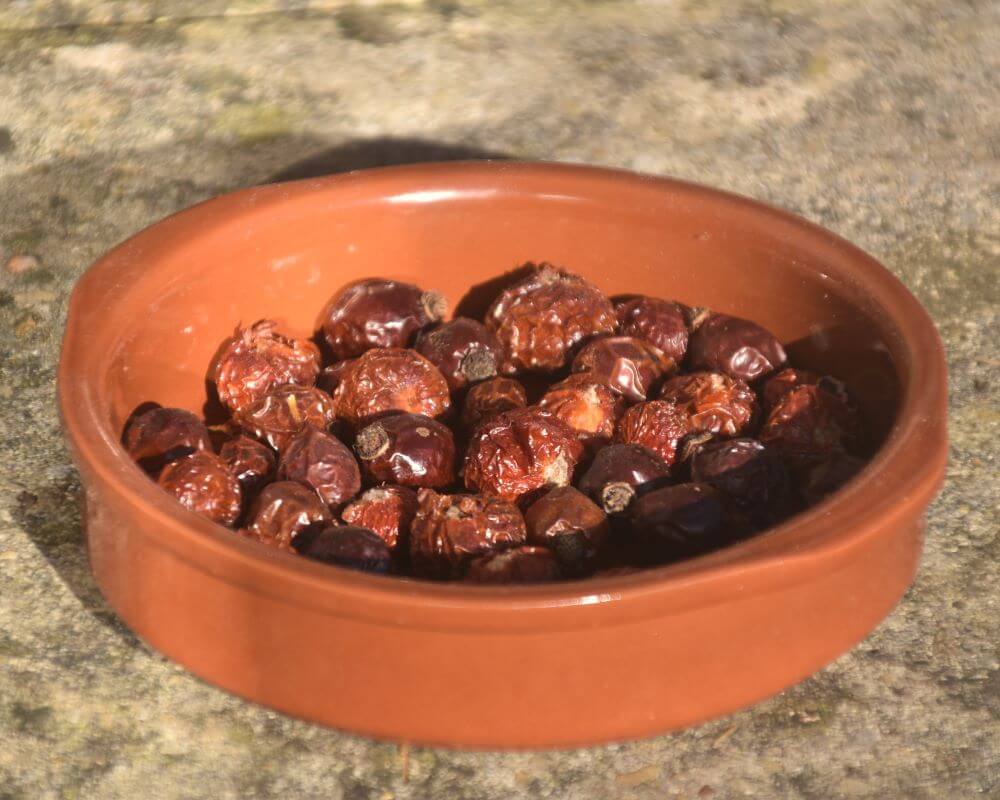
To dry rosehips simply leave them in a warm, dark place for a few weeks. You can speed this up by placing them near a source of heat, or in an oven on very low temperature (I tend to use the waste warmth while the oven is cooling down after use). When dry, grind them -using a pestle and mortar for the full homestead feeling, or just a blender for convenience- and store in a jar or tin to enjoy throughout autumn and winter. Or for as long as your stash lasts. You’ll only need about a teaspoon per cup, or a tablespoon per pot, so two good handfuls of fresh rosehips will last you quite a few cups.
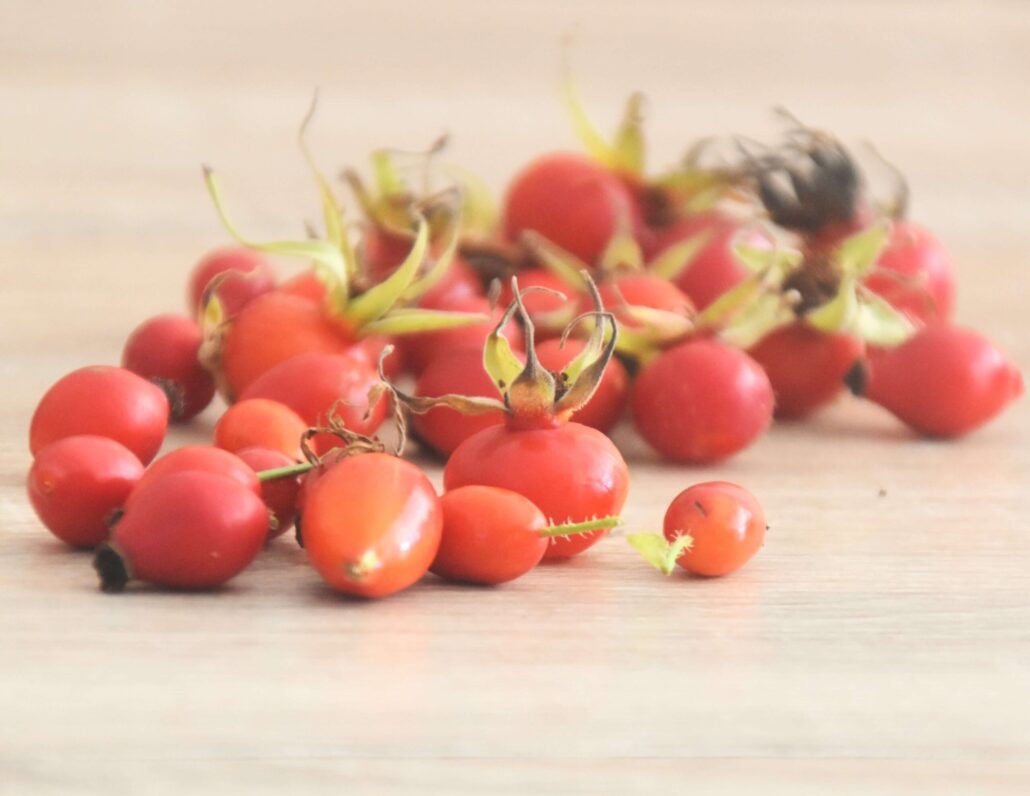
Using fresh rosehips will save you a bit more vitamins (though it is hard to tell how many of them survive the boiling water anyway). You can freeze them and use them as fresh throughout winter too. For use, you’ll want to squash them a bit and if they’re somewhat harder, or still frozen, it may be easy to cover them with boiling water for a few minutes first, then squash and then let steep for a few more minutes. The only downside compared to using dried ones, is that the flavour is less concentrated, so you’ll need a small handful per cup.
You don’t have to worry about sorting the seeds or anything. Just make sure you strain your tea or use an infuser. I cannot deny I particularly like the superfine mesh of our own cup infuser (which indeed I do use with a pot as well) to keep the tiny hairs that show up in grinding out of my tea.
Rosehip tea has a warm, slightly sweet and tangy flavour.
You can also combine it with a bit of lemon and/or cinnamon for extra pang and warmth.
Perfect for warming up after that refreshing walk in nature. But also perfect for curling up and treating yourself to a bit of doing nothing on a grey day.
And it combines rather lovely with these autumnal loafs too …
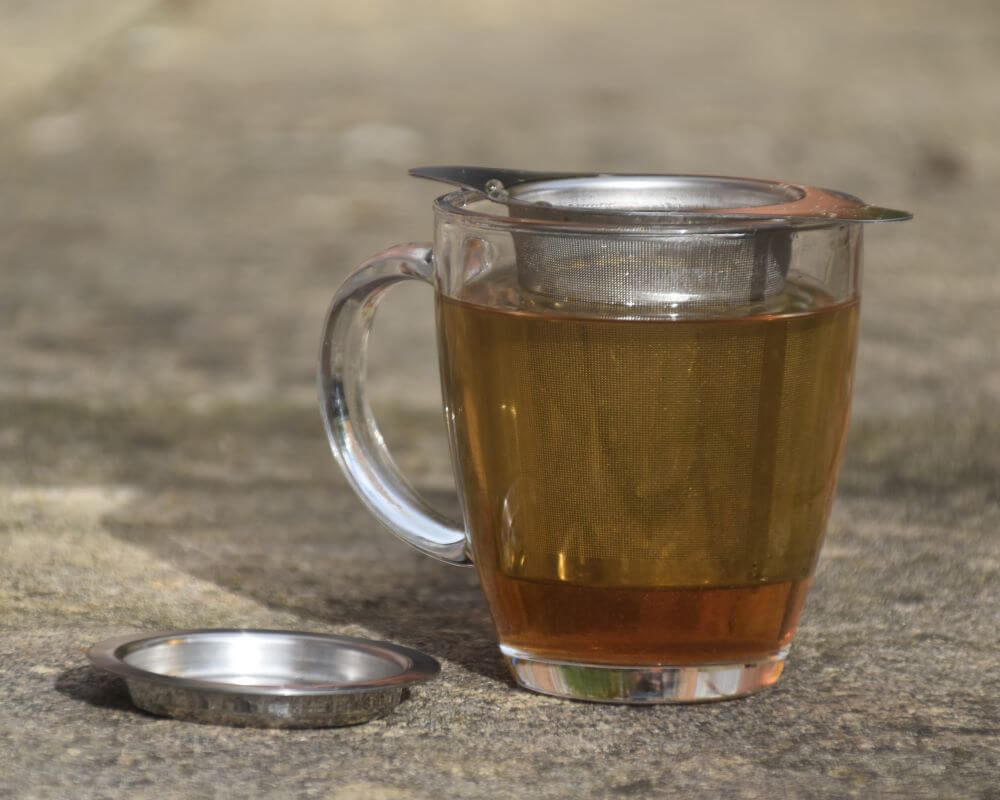

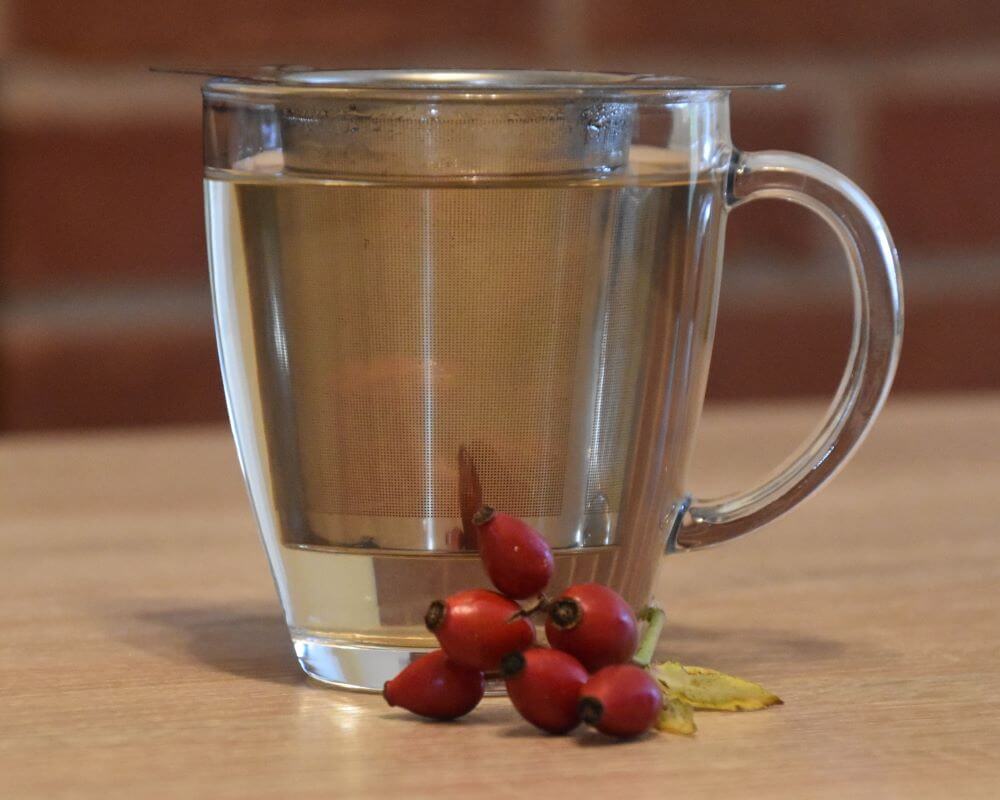
P.S. if you like to try another boosting tea, why not have a look at this one?
And if you really can’t help yourself looking forward to spring, dream and plan away reading about these teas.

